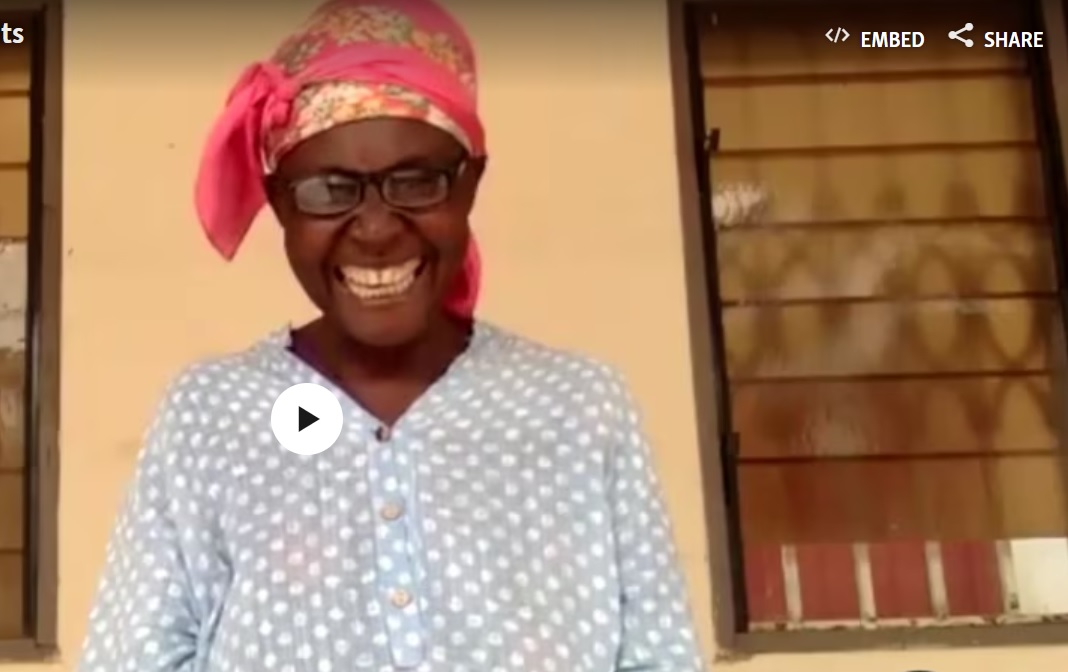As she grew older, Juliet Owusu Addai struggled to carry out essential tasks on her cocoa farm Ghana because of her blurred vision.
Only 10% of cocoa flowers self-pollinate naturally. The farmers must hand-pollinate hundreds of flowers, transferring pollen using a small pair of tweezers. They also have to sort the cocoa beans ready for market. Increasingly, farmers and buyers use mobile phones to trade, another challenging task with blurred vision.
“It was difficult to work around my farm — to do the pollination, to do the pruning, the weeding,” the 63-year-old told VOA. She suffered from crippling headaches and dizziness, which restricted her ability to work and earn money.
In 2022, Addai managed to get a pair of eyeglasses. “Before I had the glasses, I could get eight to nine sacks of cocoa [a year]. But with the glasses I have, I was able to work on the farm and get 12 sacks. So, it has really improved my livelihood,” she said.
Addai obtained the glasses following a screening done by the U.S.-based charity VisionSpring. Its latest research, done in collaboration with Britain’s Queen’s University Belfast and published in the journal PLOS ONE, suggests that eyeglasses can enable rural workers to boost their profits by a third, a potentially transformational rise in income.
The study was conducted in rural parts of Bangladesh across a range of livelihoods and ages. “The monthly median income of an individual who received reading glasses increased from US$35.3 to US$47.1 within eight months, a difference of 33.4%, whereas the control group showed no increase,” the report said. The results also suggested that eyeglasses helped economically inactive people return to the workplace.
In 2019, the World Health Organization (WHO) estimated that more than 1 billion people worldwide are living with vision impairment because they do not get the care they need for conditions like near- and farsightedness, glaucoma and cataracts.
“Eye conditions and vision impairment are widespread, and far too often they still go untreated. People who need eye care must be able to receive quality interventions without suffering financial hardship,” said Tedros Adhanom Ghebreyesus, the WHO’s director-general.
VisionSpring’s research shows a vast global disparity in access to eye health care.
“In high-income settings, 85% to 95% of the people who need eyeglasses have them. But in low-income settings, it’s as low as 3% to 15%,” Ella Gudwin, the CEO of VisionSpring, told VOA.
The glasses themselves cost about $6, including associated screening and transport costs.
“A very modest investment in vision correction for farmers and for artisans and skilled trades people yields a pretty massive return on investment in terms of the household income that they are able to continue to earn. It’s one of the few tools in the international development toolbox that can be deployed to increase income in farming communities that has yet to be used,” Gudwin said.
VisionSpring conducted 3,500 vision screenings across seven cocoa districts in Ghana in 2022. Half of those screened required eyeglasses. Some 70% of them had never had glasses before.
Ghanaian cocoa farmer Addai said the extra income she earns because of her improved vision has helped pay for her family’s education — in turn helping them to increase their future earnings.
